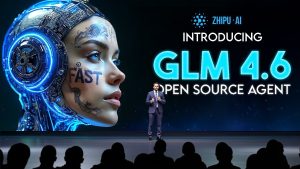Exploring the Future of AI in Deep Research

The landscape of research is evolving rapidly with the introduction of deep research technology. In the modern era, creating in-depth, advanced reports is becoming incredibly accessible. This technology, integrated within popular AI platforms, promises to transform traditional methods.
With a focus on efficiency, this tool is designed to conduct sophisticated analysis. It’s reshaping how we view research in fields like healthcare and technology. Although there are potential cost and accessibility concerns, free alternatives are being explored.
Unveiling Deep Research Technology
Researchers now have a significant ally in deep research technology. Integrated into platforms like ChatGPT, it automates the research process, synthesizing data from numerous sources. This innovation is altering traditional research methods, delivering insights quickly and with minimal human input.
The tool is designed to manage complex queries autonomously. It can provide full reports in minutes, far quicker than conventional methods. As a result, it has the potential to serve as a new standard in academic and professional settings.
Advantages Over Traditional Research
Deep research surpasses typical research methods with speed and depth. It synthesizes large volumes of information in a fraction of the usual time, making it invaluable for time-sensitive projects.
Moreover, it reduces the need for extensive human oversight during the research process. This change allows more focus on creative exploration and hypothesis formation.
While the tool does not yet fully replace human researchers, it complements them effectively. Researchers can use their time more efficiently, focusing on analysis and synthesis rather than data collection.
Technical Aspects and Capabilities
The technology leverages advanced algorithms to conduct research efficiently. It’s optimized for web browsing and text analysis, ensuring only credible sources are used.
An impressive feature is its ability to adjust strategies based on new findings. It adapts to ensure the most accurate and relevant information is pursued.
This adaptability mimics human reasoning by refining its approach based on current data. It can pause, reflect, and revise its methods to address potential gaps.
Challenges and Limitations
Despite its benefits, deep research is costly and requires substantial computing power. This limitation places it beyond the reach of many potential users.
Additionally, human oversight remains necessary. The tool needs carefully crafted prompts to ensure useful outputs.
Currently, the cost is a barrier for widespread adoption. However, as technology advances, costs are expected to decline, broadening accessibility.
Emergence of Free Alternatives
As the market for AI research grows, free tools are emerging, challenging costly models. These alternatives provide similar functionalities without the high price.
One of these free options is gaining attention for its performance, scoring impressively in benchmarks against more established tools.
Although it currently lacks the breadth of sources seen in paid models, these alternatives are evolving rapidly. Their development indicates a shift towards more accessible research technologies.
Impact on Academic Research
The impact of deep research on academia is profound. It allows students and teachers to access information quickly, supporting rigorous academic work.
It potentially transforms how educational institutions approach teaching research skills. The focus could shift from manual data collection to analytical thinking.
Indeed, the technology plays a crucial role in democratizing access to high-level research, allowing broader participation in scholarly activities.
However, educational systems must adapt to integrate these tools effectively. This includes revising curricula to emphasize critical thinking over data gathering.
Implications for Industry
Industries could see substantial benefits from adopting AI research tools. These technologies streamline data processing, leading to quicker decision-making.
Businesses remain competitive by utilizing real-time research insights. The technology supports strategic planning and innovation.
In sectors such as healthcare, AI-driven research could significantly advance medical discoveries. It presents a new frontier for industry growth and development.
Future Prospects of AI Research
As AI research tools develop, their future possibilities expand dramatically. They promise higher efficiency levels across various disciplines.
The ongoing improvements in AI capabilities suggest a future where human-like reasoning in AI becomes standard. This trend could radically change the research landscape.
While current models are not AGI, they represent important steps toward that goal. As AI evolves, so too will its potential applications in real-world scenarios.
Conclusion: Reflecting on the AI Revolution
In summary, deep research stands as a groundbreaking tool in the AI world. It bridges the gap between human and machine cognition, creating valuable insights rapidly.
Its development underlines a shift towards more integrated, autonomous systems capable of handling complex intellectual tasks.
The rise of deep research indicates a shift in how intellectual tasks are approached. By blending human intuition with machine efficiency, we stand on the brink of a new era in research.






